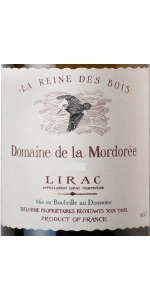Capra Marco Langhe Nascetta 2022
| Country: | Italy |
| Region: | Piemonte |
| Winery: | Marco Capra Azienda Agricola |
| Grape Type: | Nascetta |
| Organic: | Yes |
| Vintage: | 2022 |
| Bottle Size: | 750 ml |
Marco Capra Langhe Nascetta is made from 100% Nascetta - 15 years old - 1.73 acres
Aged 6 months in stainless steel vats
The name "CONNA" is a sweet nickname after his wife Monica.
Bright straw yellow with greenish hues, with an intense and interesting perfume of grapefruit, apple and aromatic herbs. Floral, fresh, focused, good acidity. Refreshing and bright, full bodied with an aromatic persistence, it is savory and tasty on the palate with a smoothness that enhances the rich character of the wine
Altitude: 400 m above sea level.
Soil composition: lime and sand.
Plant density: 5000 vines / hectare.
Cultivation system: traditional Guyot.
Yield per hectare: 6 tons.
After a short period of maceration on skins, the grapes are soft pressed. The clear must obtained ferments slowly in stainless steel vats at a controlled temperature of 16-17°C. The wine spends a long period of time on the fine lees, with frequent “batonnage”
Ideal with apetizers, shellfish and other fish dishes.
Capra Marco Doppiadi Barbera d'Asti is made from 100% Barbera.
Color: very deep bright ruby red with violet hues.
Bouquet: intense and persistent, pleasantly fruity and reminiscent of plums and black cherries.
Flavor: vinous, full, pleasantly fresh and generous.
Suitable as an aperitif with appetisers and sliced meats, it is perfect throughout a meal. it is perfect with pasta dishes featuring tagliatelle and ravioli, as well as with meaty main courses, such as stews and roasts. Interesting with medium-mature cheeses, with Toma and Pecorino.
Capra Marco Sireveris Dolcetto d'Alba is made from 100% Dolcetto.
Color: deep, bright ruby red with violet hues.
Bouquet: vinous, fruity and fragrant, with notes reminiscent of ripe cherries.
Flavour: full, dry flavour with a pleasantly bitter aftertaste, typical of this variety.
A wine for drinking throughout a meal, it is perfect with cured meat and cheese snacks, ideal with rice and pasta dishes or with red meat, all combinations which enhance its delightful suitability for drinking.
My Favorite Neighbor Cabernet Sauvignon is made from 79% Cabernet Sauvignon, 8% Malbec, 6% Syrah, 4% Petite Sirah, 3% Petit Verdot.
A homage to Stephan Asseo of L’Aventure Winery became an obsession. Sourced from exceptional vineyard sites around Paso Robles, San Luis Obispo and south to Edna Valley, this wine is cultivated meticulously by the farmers who have become My Favorite Neighbors. With their dedication to the land, we are able to craft a world class wine without any shortcuts or compromises. Welcome to our Neighborhood.
The 2022 My Favorite Neighbor is everything you’ve come to expect from our flagship Cabernet Sauvignon, sourced from our favorite Paso Robles growers who lend their neighborly spirit to the wine. Effusive aromas of raspberry and currant reveal notes of blue fruit and purple flower. On the palate, juicy red fruits are interwoven with hints of black cherry, cinnamon and toasted oak. Structured tannins carry into a long, chewy finish. Whether it’s a casual backyard barbecue or a fine celebratory meal, this versatile wine has you covered for summer and beyond.
Pierinvaletta Arneis Langhe Hills is made from 100% Arneis
No oak. Aged on the lees for 4 months in Stainless Steel Tan
Fresh, fruity, mineral.
Pierin Valetta is one of the ancestor of the Family and these wines are dedicated to him as we would like to thank him for giving us vineyards that reach up to 70 years old.
Made from 20 years old vines planted on Limestone soils.
No Oak. The wine was aged on the lees for 4 months in Stainless Steel Tanks.
Wine was slightly filtered before bottling.
Quercia nelle Langhe Barbaresco is 100% Nebbiolo.
From the famous “Serra Capelli” vineyards on the Serra Capelli hills in Neive.
Beautiful, intense garnet red, Its bouquet is fruity and spicy, with reminiscences of raspberries and blueberries, and hints of vanilla and cocoa.
Full, enchanting and elegant taste, with a good body
Marco Capra Langhe Nascetta is made from 100% Nascetta - 15 years old - 1.73 acres
Aged 6 months in stainless steel vats
The name "CONNA" is a sweet nickname after his wife Monica.
Bright straw yellow with greenish hues, with an intense and interesting perfume of grapefruit, apple and aromatic herbs. Floral, fresh, focused, good acidity. Refreshing and bright, full bodied with an aromatic persistence, it is savory and tasty on the palate with a smoothness that enhances the rich character of the wine
Altitude: 400 m above sea level.
Soil composition: lime and sand.
Plant density: 5000 vines / hectare.
Cultivation system: traditional Guyot.
Yield per hectare: 6 tons.
After a short period of maceration on skins, the grapes are soft pressed. The clear must obtained ferments slowly in stainless steel vats at a controlled temperature of 16-17°C. The wine spends a long period of time on the fine lees, with frequent “batonnage”
Ideal with apetizers, shellfish and other fish dishes.
The estate is located in Santo Stefano Belbo, on the Seirole
hill between the Langhe and Monferrato districts. The main resource of the area
has always been the cultivation of the vine: the particular geological
conformation of the soil and its microclimate favor an optimal ripening of the
bunches and the acquisition of the typical organoleptic properties.
This is a small family-run company; the art of viniculture
is a wealth that the family has handed down for generations. The quality that
distinguishes the wine is determined by the control on the entire supply chain
from the vine to the bottle, through processes that follow the tradition while
promoting the innovation that distinguishes modern companies.
Today the company is managed by Marco Capra who has
succeeded in giving the right innovative boost typical of the new generations,
while continuing to observe the teachings and experience handed down by his
forefathers. The precious consulting skills of the oenologists Dante Scaglione
and Daniela Serra is a further guarantee for the production of the very best
quality wines.
Date Founded: 1945
Owner: Marco Capra
Winery Philosophy: "Wine is a piece of Art. We
make wine as artists create their artworks. We give voice to the grapes,
exalting them with our expertise."
Tommaso Capra, known as “Tumasin”, founded the estate in the hills of Santo
Stefano Belbo in 1945. Tommaso then handed down his experience and winemaking
culture to his son Luciano. Until the end of the 1980s, the primary activity of
the estate was the production of high quality wine sold in traditional
demijohns to the wholesalers.
In 1999 Marco, Luciano’s grandson, took over the company,
giving new energy to the business. Driven by a real passion for wine and an
aspiration to renewal and his youthful enthusiasm, Marco has carried on the
family tradition and contributed to its growth.
In 2014 Marco Capra decided to change the name “Azienda
Agricola Sanmarco” and started using his own name Marco Capra directly onto the
label to highlight his personal “touch”. The convincing result is visible in
the wines, which fully express the typicity of the territory and have succeeded
in gaining the increasing appreciation of both wine experts and wine
enthusiasts.
Winery Acreage: 44.5 acres
Winery Production: 5,000 / 9L cases
Varietals Produced: PINOT NOIR, CHARDONNAY, MOSCATO,
NASCETTA, DOLCETTO, BARBERA, NEBBIOLO
Winemaker: Marco Capra
Marco Capra was born in 1981 in Asti and has been living in
Santo Stefano Belbo since his birth. He started working with his grandfather
for a couple of years when he was 18. From 1996 to 1998 he learned to work the
land and the vineyards, while in 1999 he started working fulltime at the
winery. In 2001 the winery was renovated and in 2014 he personalized the name
of the label after his name. He is married to Monica and is a father of two
lovely kids of 7 and - Elisabetta and Riccardo.
Producing high quality wines is Marco Capra’s first goal,
and in order to achieve this, his personal commitment and work start in the
vineyard: “The vineyards are our most important capital and it is our job to
take care of them and work them in the most natural and eco-compatible way
possible”. Piedmont is renowned for its typical, richly traditional grape
varieties – Nascetta, Nebbiolo, Dolcetto, Barbera and Moscato.
The hills that give life to Marco Capra wines are those of
Langhe, Roero and Monferrato, a wonderful marriage between nature and man’s
work recognized as UNESCO World Heritage Site in 2014. From the top of the
Seirole hill in Santo Stefano Belbo; Marco enjoys a spectacular view on the
vineyards which are perched on the gentle slopes, with the best exposition to
the sun’s rays and the breeze from the wind. The terroir is special, very rich
and able to give life to the great wines of the Piedmontese heritage.
Marco Capra Azienda Agricola produces mainly Piedmont’s
autochthonous wines to enjoy all the characteristics of the terroir. The
vineyards were chosen in the areas that are most suited to the cultivation of
the single grape varieties. Meticulous care and attention are given to the
vines, in the respect of agriculture techniques that allow to keep the yield
under control. Defensive treatments are carried out prioritizing products with
a low environmental impact.
The beginning of the harvest is decided by observing the degree of ripeness of
the grapes, their sugar and acid contents and their development over time on
the basis of the atmospheric conditions. The harvest usually starts at the end
of August, with the Chardonnay and Pinot Noir grapes for sparkling wines,
whereas Moscato, Chardonnay and Nascetta grapes are harvested at the beginning
of September. Dolcetto and Barbera grapes are harvested between the end of
September and the beginning of October followed, in mid October, by Nebbiolo grapes.
The grapes are all harvested by hand, into small perforated crates. All the
phonological phases and the work in the vineyard are supervised by the
agronomist Angelo Cortese.
The cellar
The wine is born in the vineyard, but man is responsible for trying to best
transform the fruit that he receives after months of hard work in the vineyard.
The architectural structure and all the technical systems have been designed
and built to obtain the transformation of the grapes to the highest possible
levels.
The cellar is equipped with all the latest technology, yet it remains faithful
to the most traditional vinification processes.
Every step of the winemaking process - from the arrival of the grapes to
fermentation, maturation, bottling, aging and shipping - is supervised by Marco
Capra who, flanked by the oenologists Daniela Serra and Dante Scaglione,
oversees every single phase in order to achieve the best final result.
This is a small family-run company; the art of viniculture is a wealth that the family has handed down for generations. The quality that distinguishes the wine is determined by the control on the entire supply chain from the vine to the bottle, through processes that follow the tradition while promoting the innovation that distinguishes modern companies.
Today the company is managed by Marco Capra who has succeeded in giving the right innovative boost typical of the new generations, while continuing to observe the teachings and experience handed down by his forefathers. The precious consulting skills of the oenologists Dante Scaglione and Daniela Serra is a further guarantee for the production of the very best quality wines.
Date Founded: 1945
Owner: Marco Capra
Winery Philosophy: "Wine is a piece of Art. We make wine as artists create their artworks. We give voice to the grapes, exalting them with our expertise."
Tommaso Capra, known as “Tumasin”, founded the estate in the hills of Santo Stefano Belbo in 1945. Tommaso then handed down his experience and winemaking culture to his son Luciano. Until the end of the 1980s, the primary activity of the estate was the production of high quality wine sold in traditional demijohns to the wholesalers.
In 1999 Marco, Luciano’s grandson, took over the company, giving new energy to the business. Driven by a real passion for wine and an aspiration to renewal and his youthful enthusiasm, Marco has carried on the family tradition and contributed to its growth.
In 2014 Marco Capra decided to change the name “Azienda Agricola Sanmarco” and started using his own name Marco Capra directly onto the label to highlight his personal “touch”. The convincing result is visible in the wines, which fully express the typicity of the territory and have succeeded in gaining the increasing appreciation of both wine experts and wine enthusiasts.
Winery Acreage: 44.5 acres
Winery Production: 5,000 / 9L cases
Varietals Produced: PINOT NOIR, CHARDONNAY, MOSCATO, NASCETTA, DOLCETTO, BARBERA, NEBBIOLO
Winemaker: Marco Capra
Marco Capra was born in 1981 in Asti and has been living in Santo Stefano Belbo since his birth. He started working with his grandfather for a couple of years when he was 18. From 1996 to 1998 he learned to work the land and the vineyards, while in 1999 he started working fulltime at the winery. In 2001 the winery was renovated and in 2014 he personalized the name of the label after his name. He is married to Monica and is a father of two lovely kids of 7 and - Elisabetta and Riccardo.
Producing high quality wines is Marco Capra’s first goal, and in order to achieve this, his personal commitment and work start in the vineyard: “The vineyards are our most important capital and it is our job to take care of them and work them in the most natural and eco-compatible way possible”. Piedmont is renowned for its typical, richly traditional grape varieties – Nascetta, Nebbiolo, Dolcetto, Barbera and Moscato.
The hills that give life to Marco Capra wines are those of Langhe, Roero and Monferrato, a wonderful marriage between nature and man’s work recognized as UNESCO World Heritage Site in 2014. From the top of the Seirole hill in Santo Stefano Belbo; Marco enjoys a spectacular view on the vineyards which are perched on the gentle slopes, with the best exposition to the sun’s rays and the breeze from the wind. The terroir is special, very rich and able to give life to the great wines of the Piedmontese heritage.
Marco Capra Azienda Agricola produces mainly Piedmont’s autochthonous wines to enjoy all the characteristics of the terroir. The vineyards were chosen in the areas that are most suited to the cultivation of the single grape varieties. Meticulous care and attention are given to the vines, in the respect of agriculture techniques that allow to keep the yield under control. Defensive treatments are carried out prioritizing products with a low environmental impact.
The beginning of the harvest is decided by observing the degree of ripeness of the grapes, their sugar and acid contents and their development over time on the basis of the atmospheric conditions. The harvest usually starts at the end of August, with the Chardonnay and Pinot Noir grapes for sparkling wines, whereas Moscato, Chardonnay and Nascetta grapes are harvested at the beginning of September. Dolcetto and Barbera grapes are harvested between the end of September and the beginning of October followed, in mid October, by Nebbiolo grapes.
The grapes are all harvested by hand, into small perforated crates. All the phonological phases and the work in the vineyard are supervised by the agronomist Angelo Cortese.
The cellar
The wine is born in the vineyard, but man is responsible for trying to best transform the fruit that he receives after months of hard work in the vineyard. The architectural structure and all the technical systems have been designed and built to obtain the transformation of the grapes to the highest possible levels.
The cellar is equipped with all the latest technology, yet it remains faithful to the most traditional vinification processes.
Every step of the winemaking process - from the arrival of the grapes to fermentation, maturation, bottling, aging and shipping - is supervised by Marco Capra who, flanked by the oenologists Daniela Serra and Dante Scaglione, oversees every single phase in order to achieve the best final result.
Jean-Michel Sorbe Quincy Blanc is made from 100 percent Sauvingon Blanc.
The first nose is expressive and opens up to notes of acacia, citrus (lemon, grapefruit). Full on the palate with lovely freshness. This wine boasts nice balance and good length.
The vines are 15 to 20 years old and are located on the left bank of the Cher River, southwest of Quincy. This vineyard enjoys good exposure to the sun and overlies hillocks composed of sandy alluvial deposits and gravel dating back to the Quaternary Period. Each terroir is managed with minimal intervention in an environmentally friendly approach. Vinification: Slow pressing. Fermentation took place under controlled temperatures (18°C).The wine was aged on fine lees for a minimum of 4 months. It was filtered only once before being bottled.
Pair with crustaceans, asparagus, or goat's cheeses.
After pouring, allow the wine to breathe for a few moments in the glass before enjoying so that it may fully release all of its aromas.
Praia Aveleda Vinho Verde NV is made from 40% Loureiro, 20% Trajadura, 20% Arinto, 20% Azal.
Praia, which means "beach" in Portuguese, is a smooth and fresh wine with delicate and lovely fruity flavors. Slightly spritzy, it is well balanced and very refreshing.
The region is typical for its unique wines that are fresh and light, combined with a very well balanced acidity. These characteristics result from the region's unique soil and climate, with a strong Atlantic influence that you will identify when you taste it.
The wine is ideal as an aperitif or throughout a meal, especially with fish, seafood, white meat and salads. Due to it freshness, it is particularly pleasant in a relaxed and informal ambiance.
A barrel fermented, old vines Verdejo made in a style different from what we typically see in this white varietal. It has a remarkable complexity, resulting in the smoothness and depth of a high-end white. Very suitable for cellaring.
Golden yellow color with greenish reflections. Complex, toasty aromas of nuts & dried fruit. Large, creamy, spicy, balanced and voluminous.
Rice with fish, cooked seafood, grilled seafood, baked white fish.
"The eponymous 2020 Ossian was produced with Verdejo grapes from old, organically farmed vines around the village of Nieva (Segovia), a zone where phylloxera didn't reach. They consider 2020 their finest vintage to date, with a big change from 2018 and when they have achieved a much better understanding of their vineyards. It has notes of pit fruit and sweet spices, with good weight on the palate, moderate alcohol (13.5%) and ripeness and good freshness and balance. It's serious and with potential to develop in bottle. 80,000 bottles produced. - Luis GUTIERREZ"
- Robert Parker's Wine Advocate (January 31st 2023), 94 pts
Es Lo Que Hay Garnacha is made from 95% Garnacha, 5% Moristel, Miguel de Arco and Provechón (Bobal). 75 to 100 year old vines.
“ES LO QUE HAY - it is what it is. A common Spanish expression, but one I like to reserve for the few old high altitude Garnacha vineyards that survive in Aragon . What you taste in the bottle is a true expression of what there is in the vineyard. It´s as simple as that.”
High altitude ancient vineyards (75-100 years) at 1,000 to 1,100 meters above sea level with Pizarra slate and quartzite soils. Completely dry grown and unirrigated, this is an inhospitable continental climate with extreme changes of temperature where mountain herbs, almonds, cherry trees and Garnacha form a breathtaking patchwork. Low annual rainfall of 200-300mm and the remarkable soils produce fine and elegant Garnacha which is punctuated by intense black fruit flavors with complex mineral, smoke and garrigue notes.
Review:
"The red 2019 Es Lo Que Hay is mostly old-vine Garnacha with 5% other grapes, mostly Moristel with a little Miguel de Arco and some Provechón (Bobal), from very stony old vineyards in the village of Villarroya de la Sierra. The grapes fermented together with 20% full clusters in concrete and were destemmed after a five-day cold soak with the natural yeasts; then the wine matured mostly in concrete with some leftovers in Flextank egg for 15 months. It's ripe without excess (14.26% real alcohol), balanced by low pH and good acidity and has a powerful Mediterranean profile, round and full-bodied, with hints of dry hay and straw and a touch of dark chocolate. The 2019s are evolving nicely and should have a positive development in bottle, and this is a good example. 8,270 bottles produced. It was bottled in December 2020. - Luis Gutiérrez"
- Robert Parker's Wine Advocate (November 2021), 93 pts
"The 2019 Garnacha Vinas Viejas is just about all Grenache (there are small amounts of Moristel, Miguel de Arco, and Bobal) from ancient vines that saw a touch of stems and aging in concrete tanks. This plump, medium to full-bodied, round, downright sexy beauty gives up lots of ripe red and black fruits as well as peppery spice, herbes de Provence, and sandalwood. It's balanced, has supple, incredibly polished tannins, no hard edges, and is just a beautiful Garnacha that has so much to love. It will keep for 5-7 years, if not longer."
- Jeb Dunnuck (August 2022), 93 pts
Gaec de Brangers Menetou Salon Blanc 100% Sauvignon Blanc is crisp and refreshing with rich, ripe lime and grapefruit aromas. Elegant, beautifully rounded, harmonious and well-balanced, a mineral sytle and a smooth and long finish. It is ideal as an aperitif and a great match with shellfish, smoked and grilled salmon, goat cheese.
DOMAINE DU GAEC DES BRANGERS is owned by the CHAVET family, which is one of the most reknown winemaking families of the Menetou-Salon Appellation. Philippe Chavet has been running the estate for 25 years and each year, his cuvees are awarded in the international competitions and by the international press.
Unoaked
12.5 ABV
Average age of the vines is 20 years old. Traditional winemaking in temperature-controlled stainless steel tank.
Slow fermentation at low temperature.
Ideal as an aperitif, any cooked fish such as smoked and grilled salmon, and with goat cheese.
Mordoree Lirac Blanc Reine des Bois is made from Grapes : Grenache 35 % Clairette 25 % Viognier 10 % Roussanne 15 % Marsanne 10 % Picpoul 5%>
Color : green gold
Aromas : white fruits, peach, apricot, pear, violet.
Palate : rounded, long finish, highly flavoured.
Ageing Potential : 4-5 years.
Surface : 4 Ha. Yield : 35 Hl./Ha. Vineyard age : 30 years Terroir : Clay / chalk with pebble stones. Harvest : by hand Vinification : skin maceration and direct pressing with temperature control. Fermentation : oak barrel fermentation for 25% of the total volume
Pairs well with appetizers, fish, seafood.
Review:
"Iconic grapes of 35% Grenache, 25% Clairette, 10% Viognier, 15% Roussanne, 10% Marsanne, and 5% Picpoul from 40-year-old vines make up this organic Southern Rhône white. A floral bouquet of white tea and jasmine make their designs on a defined slate mouthfeel. Lime pops with a tart center, along with notes of peach and gingerbread on a keen, edgy finish."
- The Somm Journal (Feb/March 2022), 94 pts
- back
This wine is floral, exuberant, with lengthy smooth tannins, and metallic notes.
This cuvée takes its name from a small parcel of the Adrianna Vineyard that is completely covered with oval white stones and was the site of an ancient riverbed. The abundant stones provide optimal drainage and extreme temperatures. They absorb heat and moderate the nights, but also function like ice cubes after a very cold night. Stony soil Malbecs tend to be extremely aromatic, rich and luxurious, just like the River Malbec from Adrianna. This wine can be enjoyed young or aged for decades.
Pair with grilled meats.
Review:
There is an usual stony austerity in the 2021 Adrianna Vineyard River, cropped from a cold year when the full clusters fermented in concrete with a slightly shorter maceration and an élevage in a 2,000-liter oak foudre and the rest in stainless steel. It has a moderate 13.4% alcohol with very high acidity (8.2!) and a low pH (3.37), incredible parameters of freshness. The wine was closed and took time to take off in the glass, revealing a very elegant and subtle personality, with the silky texture of the very fine tannins, pristine aromas and flavors and a sense of harmony that was moving. It's powerful but extremely elegant in that rare combination of clout and energy, a wine of light, aerial, with some ethereal qualities, delicate and refined. This combines the cool place and high altitude, the cool year and the stony soils, to deliver a stunning Malbec that goes well beyond the variety. Bravo!
-Wine Advocate 100 Points
A balanced and memorable Chardonnay that starts with aromas of orangeblossom, Asian pear, crème fraiche, peaches and chamomile, complemented bynotes of toffee, honeysuckle, and graham cracker. On the palate, flavors of greenapple, Meyer lemon and stonefruit are finished with notes of tangerine and vanilla.This Chardonnay is smooth, creamy and balanced with a lingering acidity and a longfinish. This is the perfect wine to pair with a brie or gouda cheese plate drizzled withlocal honey and hazelnut.
Review:
Fruit is sourced primarily from the southern part of Napa Valley, and aged five months in French oak. With its billowy mouthfeel, the liquid seemingly floats above the palate. Lemon curd, daffodil, cinnamon toast, and creamy vanilla sandalwood are delicious and generous flavors. This is approachable luxury. - The Tasting Panel, July/August 2025
-Tasting Panel/Somm Journal 92 Points



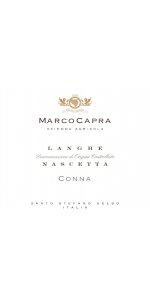
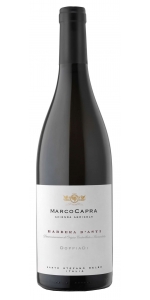
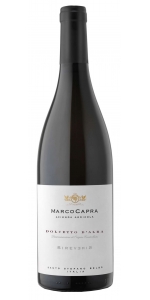
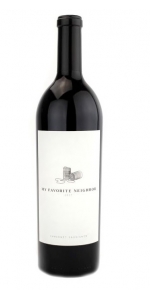
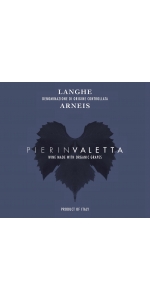

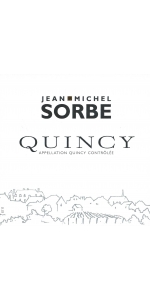


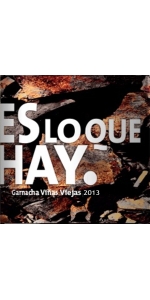
-150x300.jpg)
